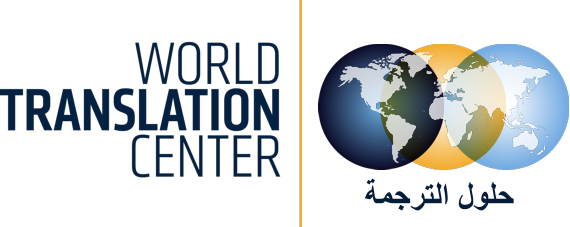إنّ "المركز العالمي للترجمة" (WORLD TRANSLATION CENTER) هو شركةٌ رائدةٌ في ترجمة اللغات وخدمات التسجيل الصوتي التي تعتمد على خبرات المحترفين المتعاقدين معها حول العالم.
Articles and Stories
Chinese Fonts

The most popular fonts in Mainland China include:

The most popular font in Mainland China is Songti which is characterized by thin, straight horizontals, thick verticals and flourishes/serifs. Look at this songti character:

The Songti font has a long history and is the most classic font of all Chinese fonts. Another popular font is MS Yahei. All other fonts are considered more decorative in nature and are most commonly used for a headlines, greeting cards, brochures and marketing materials and more.
Traditional characters vs simplified characters
The Chinese, as well as the Japanese, for centuries used traditional characters. In 1956, Mainland China decided to simplify the complicated traditional characters to help with eliminating illiteracy. From that date on simplified characters became the official characters in Mainland China.
Taiwan, Hong Kong and Macau did not switch to simplified characters as these regions were not under the control of mainland China.
The Japanese language uses Chinese characters in their font. Since they came from China, they were written in the traditional style. When the traditional writing was switched to simplified in China, the Japanese people also had to adapt to the simplification of the characters and started switching to a few simplified ones. Some traditional Chinese characters still exist in the Japanese language, but now both the Chinese characters used in China and those used in Japan share the same Unicode.
Singapore also began using simplified characters in 1960 to comply with mainland China. Singapore uses both English and simplified Chinese as its official languages.
Font issues
Since Unicode is now used throughout the world, the issues with the different font coding systems encountered before, like HK and Taiwan using Big5 and Mainland China and Singapore using GB, have been mostly eliminated. However certain font issues still exits today. If you convert, for example, a document from MS Word to PDF, and if the PDF font-set does not certain a rarely used character, it will substitute that character to another typeface where this character is included. That is why you may occasionally see an inconsistency in a converted PDF file. Here is one example:

The same issues can apply when converting Cantonese documents to PDF. Another issue with Cantonese is that certain rarely used characters are not available in Unicode, and if a character is not available in Unicode, it will not be displayed correctly.
If you do not speak the language, it is difficult to spot differences between a Word file and a PDF file. It is best to let a professional translator review your converted file or have the conversion done by a professional.







